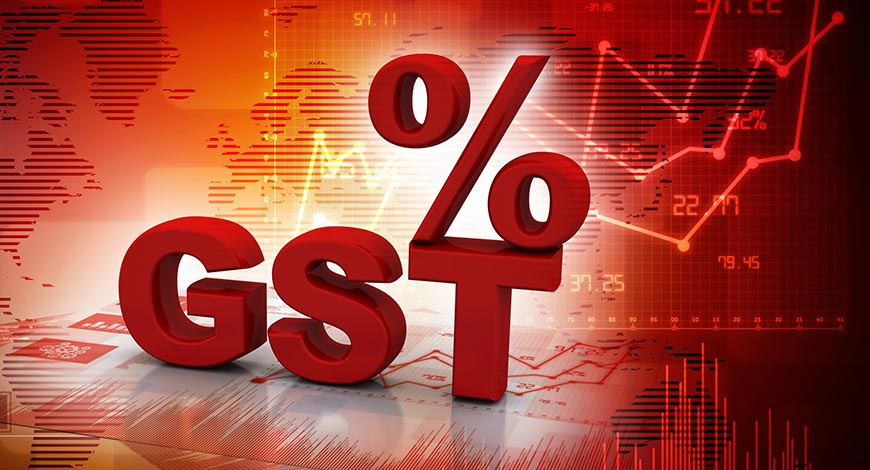GST collections rise 11% YoY to Rs 1.59 lakh crore in August

GST collections rise 11% YoY to Rs 1.59 lakh crore in August
The Ministry of Finance has announced that the Goods and Services Tax (GST) collections for the month of August exhibited a notable year-on-year growth of 10.8 percent, totaling Rs 1.59 lakh crore. This encouraging uptick in GST collections serves as a positive indicator for India’s economy, suggesting steady economic recovery and increased economic activity compared to the same period in the previous year.
It’s noteworthy that while the August GST collections amounted to Rs 1.59 lakh crore, there was a marginal dip of 3.7 percent when compared to the preceding month of July, which witnessed collections of Rs 1.65 lakh crore. This slight decline is in line with typical fluctuations seen in tax revenue collections and doesn’t necessarily signal a negative trend.
Importantly, it’s the sixth consecutive month that the monthly GST revenue has surpassed the Rs 1.5-lakh-crore benchmark, highlighting the resilience of the tax regime and its consistent contribution to government revenue.

The strong and consistent GST collections, even amidst challenges posed by the COVID-19 pandemic, underscore the efficacy of the GST system in ensuring a steady stream of indirect tax revenue for the government. This revenue plays a crucial role in financing various government initiatives, infrastructure development, and public services, ultimately contributing to the nation’s economic growth and stability.
As per the 2023-24 Budget, the Central government has set an optimistic expectation for its Goods and Services Tax (GST) collections to witness a significant increase of 12 percent during the current financial year. This ambitious target indicates the government’s confidence in the continued growth and stability of the Indian economy, with GST playing a pivotal role in contributing to the national exchequer.
Breaking down the GST collections for the reported period, we can discern a comprehensive view of the revenue components. The Central GST (CGST) accounted for Rs 28,328 crore, reflecting the share of GST collected by the Central government. Simultaneously, the State GST (SGST) contributed Rs 35,794 crore, underlining the portion allocated to state governments, signifying a balanced distribution of tax revenues between the central and state governments.
Integrated GST (IGST) collections amounted to a substantial Rs 83,251 crore. IGST typically applies to interstate transactions and is an essential component of GST revenue, ensuring uniformity and seamless trade across state borders.
Additionally, the compensation cess collected stood at Rs 11,695 crore. Compensation cess is a critical element aimed at compensating states for potential revenue losses during the initial phases of GST implementation.
This breakdown highlights the complex and structured nature of GST, where revenues are divided into different components to ensure equitable distribution among the central and state governments. The government’s focus on revenue growth underscores its commitment to utilizing GST collections for essential public services, infrastructure development, and economic stability, ultimately contributing to India’s overall economic progress.
In August, the government took significant steps in the distribution of GST revenue. It settled a substantial sum of Rs 37,581 crore for the Central Goods and Services Tax (CGST) and an additional Rs 31,408 crore for the State Goods and Services Tax (SGST) from the Integrated Goods and Services Tax (IGST) pool. This action exemplifies the meticulous process of allocating GST revenue between the central and state governments, ensuring that the respective jurisdictions receive their due share.
After the settlements, the total revenue for the month of August was recorded at Rs 65,909 crore for the Centre and Rs 67,202 crore for State GST. This balanced distribution is integral to maintaining fiscal equilibrium between the central and state governments, reinforcing the cooperative federalism framework on which the GST system is built.
In a noteworthy statement, the finance ministry highlighted that during the month of August, revenue generated from the import of goods exhibited a 3 percent increase, while revenues stemming from domestic transactions, including the import of services, experienced an even more significant upsurge of 14 percent compared to the revenues from these sources during the same month in the preceding year. This robust growth in revenue suggests a thriving economic environment with increased cross-border trade activity and domestic transactions, further substantiating the resilience and effectiveness of the GST regime as a revenue-generating mechanism.
These developments underscore the critical role played by GST in the government’s revenue generation, enabling the financing of essential public services, infrastructure development, and social welfare programs, all of which contribute to India’s economic progress and stability.
The latest Goods and Services Tax (GST) data reveals a noteworthy trend in revenue collection, indicating a consistent increase over the years. In the fiscal year 2023-24, the average monthly GST collection has reached an impressive Rs 1.66 lakh crore. This figure signifies a remarkable achievement, highlighting the resilience and growth of the Indian economy as well as the efficacy of the GST regime in contributing to the national exchequer.
To provide context, it’s worth noting the significant evolution of GST collections over the years. In its inaugural year in 2017-18, GST collections started modestly, averaging under Rs 1 lakh crore per month. However, these collections witnessed substantial growth in the subsequent years. Notably, the fiscal year 2020-21 marked a pivotal turning point, as the COVID-19 pandemic posed challenges to various sectors of the economy. Despite these challenges, GST collections rebounded and surged, leading to an average of Rs 1.51 lakh crore per month in the fiscal year 2022-23.
This consistent growth in GST collections is indicative of several factors, including the resilience of the Indian economy, improved compliance by businesses, and the effectiveness of the GST framework in streamlining taxation. The rise in revenue is instrumental in financing government initiatives, supporting infrastructure development, and ensuring the provision of essential public services. It underscores the importance of GST as a vital contributor to India’s economic progress and fiscal stability, exemplifying its role in driving the country’s financial growth trajectory.




